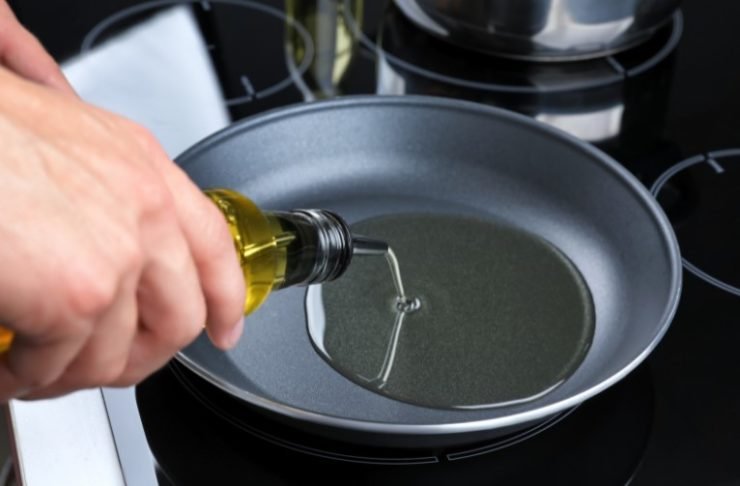Industrial deep fryers in restaurant kitchens have dials or digital displays to indicate the temperature of the oil. It is crucial to reach and maintain stable temperatures in order to properly cook products and avoid burning.
But how can you tell when oil is ready when you’re cooking at home?
After 15 years in restaurants, I’ve picked up some easy tips to ensure oil is ready for frying, most of them tacit knowledge passed on from fellow cooks or chefs, and one from my dad.
In this article, I’ll share a few simple ways to tell if oil is ready for frying, even if you don’t have a thermometer.
In This Article
5 Methods To Test When Oil Is Ready
Method #1: Thermometer

When it comes down to it, using a thermometer is the most accurate way to test the temperature of the oil.
Although it isn’t necessary to spend an arm and a leg on a fancy thermometer, it is worth noting that cheap instant-read dials won’t necessarily do the job. Because those devices are intended to operate within a lower temperature range, specifically to measure cooked product, they won’t always read hot oil accurately.
A deep fry thermometer, a digital probe thermometer, or a digital infrared thermometer gun will be able to read out temperatures that are high enough for cooking (325°-375° F).
Method #2: Bamboo Skewer

As a child, I remember asking my dad why he used so many skewers even when we weren’t eating kabobs. He described them as “Filipino thermometers.”
I can’t validate that claim, but it did stick with me, and their usefulness persisted into my adulthood.
My dad keeps a jar of bamboo skewers next to the stove to this day. Here’s how it works:
After you’ve preheated oil, dipping a bamboo skewer in it will tell you when the oil is hot.
If the bamboo skewer doesn’t react with the oil in any way, the oil is not hot enough.
If the oil is hot, bubbles will rapidly form around the skewer.
This is especially handy if you’ve been keeping an eye on the oil and have waited for it to warm up. It is always ideal to be present at the stove while heating oil.
Unfortunately, while this method will tell you if the oil is hot enough, it won’t help you discern whether or not it’s too hot.
Method #3: Fry A Small Piece Of Bread Or Dough
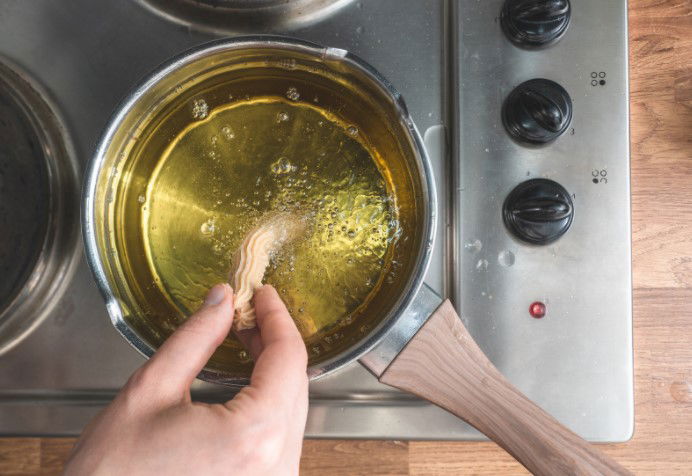
This is my favorite way to test if oil is at the right temperature.
Take a small piece of bread or dough, no more than about a square inch, and put it in the oil.
If it doesn’t react with the oil at all, it’s too cold. If it reacts violently, it’s too hot.
Oil at the ideal temperature will brown any part of the piece of bread or dough that is exposed to the oil in about 20 seconds or less. The color of the small test piece is a great visual for how the oil will cook.
If the bread is too brown, or browns immediately, the oil is too hot, and you can adjust and lower the heat.
Method #4: Light Sprinkle Of Water
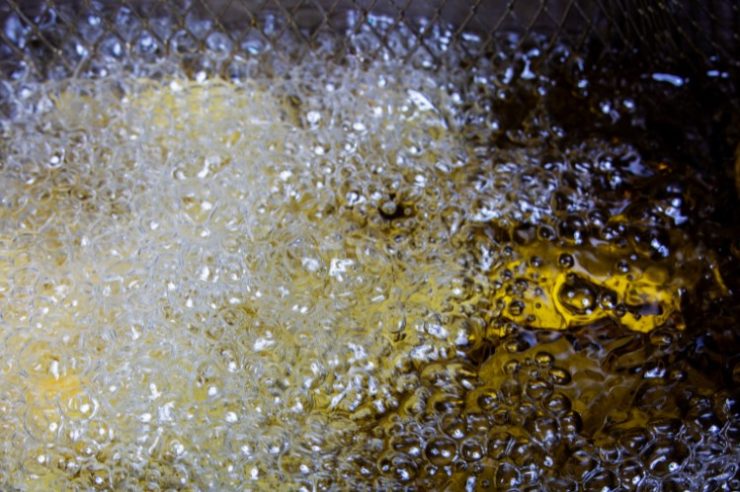
I used this method frequently when opening the kitchen line for breakfast service. In my experience, this was the fastest method to check the readiness of the deep fryer, and every kitchen has access to water.
I would run my hand under the sink for only a moment and then flick water into the deep fryer.
If it sizzled and popped, the fryer was ready.
If there was no reaction, I would let the fryer heat a little longer before trying again.
It only takes a small amount of water to test oil. You want your hand to be almost dry before you flick tiny drops of water into the pan.
This was easy to do in restaurants because of the amount of space afforded, and I could flick water from a safe distance, just in case the oil was indeed too hot and popped more violently.
For the home, I would recommend method #3, but this can work in a pinch after you’ve become more comfortable and experienced in heating up oil for frying.
A Word of Caution: Be very careful with this method, because water and oil can react very violently.
Method #5: Visual Cues And Feel
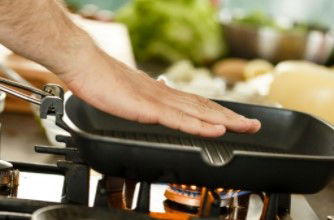
After you’ve familiarized yourself with the above methods, note what the oil looks like when it is ready.
Cooking at home, if the oil in a pan is starting to shimmer, I’ll put my hand a couple of inches above to feel how hot it is.
With experience, this can become a second nature to tell when oil is ready.
I would encourage you to use this with any of the above methods.
A Few More Tips For Successful Frying
You Don’t Need A Deep Fryer To Deep Fry
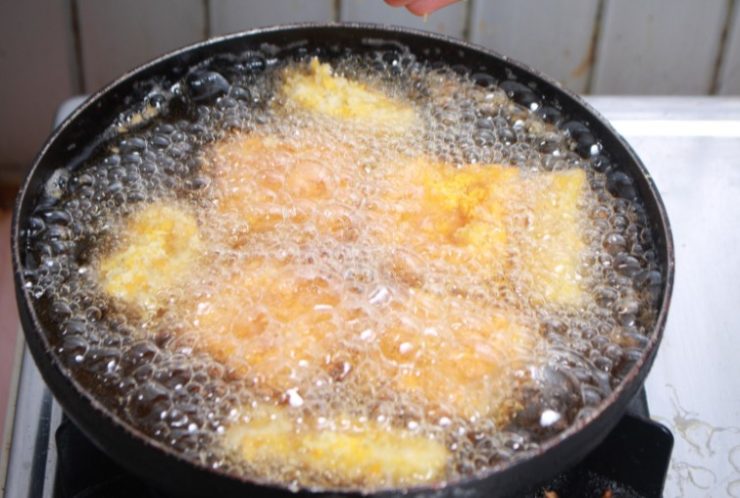
Deep fryers are handy, but they can be bulky or not suitable for your space. Maybe you just don’t deep fry that often.
Deep frying can easily be done in a saucepan, stockpot or wok too.
Shallow Frying Vs. Deep Frying
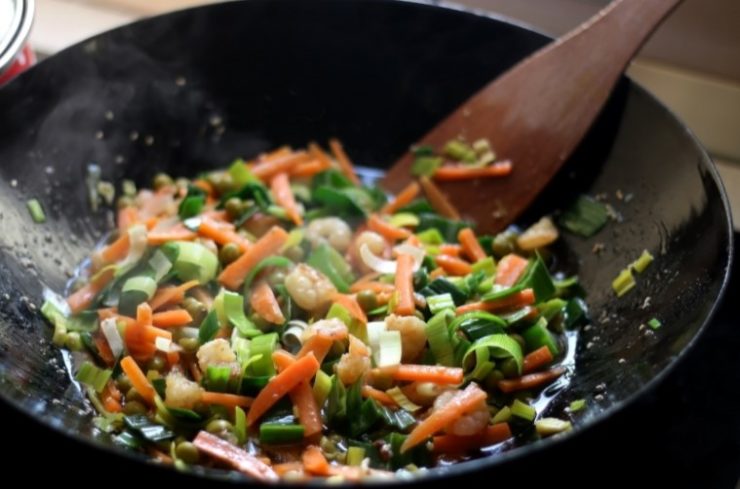
From a health standpoint, shallow frying offers little benefit over deep frying.
It can be less messy and it uses less oil, and depending on your equipment and what product you’re using, it just may be more convenient.
Deep-fried classics like wings or french fries don’t lend themselves as well to shallow frying. Sometimes you just need things to be engulfed in hot fryer oil.
Proper Oil Temperature Is Crucial
If you start trying to cook a product before the oil is hot enough, whatever you’re cooking will absorb too much oil and become soggy.
The intent of frying is to cook evenly and provide that crisp texture.
Oil that is too hot can burn or overcook a product.
When I worked at a buffet, we kept one fryer running at 325°. It was mostly used to fry chicken breasts and thighs. This temperature made sure the product was thoroughly cooked without overcooking or burning the skin, every time.
Don’t Use Too Much Oil

Especially with deep frying, I would recommend never to fill a container more than halfway with oil.
Keep in mind that your product will displace some of the liquid, and you need to anticipate bubbling and sizzling. This will help reduce the chance of overflow or unnecessary cleanup.
Storage And Clean Up
If you’re using a sauce or frying pan, remove it from heat after use.
Let the oil cool down before you start to clean, store, or dispose of it.
I recommend filtering the oil through a strainer into another container after use. A large jar is suitable.
Oil can be reused, and a deep amber color is normal for used oil.
Mind what you’ve cooked with the oil, as that can impart flavor into what you’re cooking next.
Discard oil if it is too brown or black, or has a rancid smell. A good rule of thumb I like to follow is “When in doubt, throw it out.”
Pro-tip: Never pour oil down your sink drain. It will solidify and cause a backup.
Frequently Asked Questions
How can you tell if oil is ready without a thermometer?
Cooking a small piece (1 inch by 1inch) of bread or dough will demonstrate how the oil’s temperature will cook a product.
How long does it take to preheat oil?
Depending on the amount of oil and the size of the pan, expect to wait 5-10 minutes until the oil is ready.
What should you do with oil after frying?
After frying, remove it from heat, let it cool, and filter through a strainer into another safe container.
